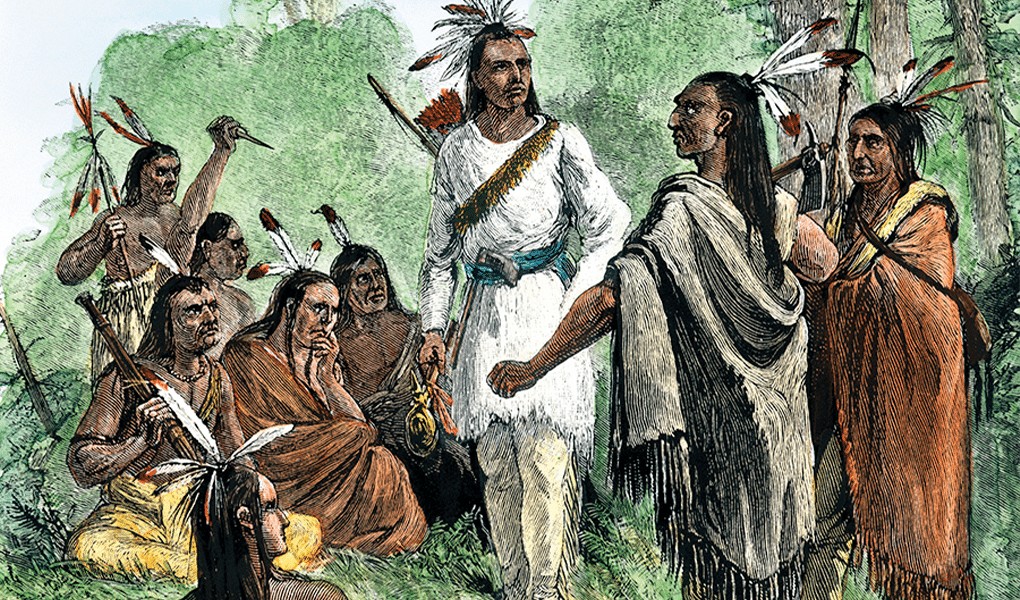The Nottoway tribe was a Native American tribe that resided in Virginia and spoke the language of the Iroquois.

Like many natives during the colonial period, they were forced off their land by European settlers and their considerable migration. By 1900, their language had been extinct, and much of their history was forgotten.
They are one of the four Native American tribes in Virginia not recognized by the Federal Government.
History
Like many of their close Iroquoian neighbors, the Nottoway lived west of the Fall Line in the Piedmont region. Edward Bland was the first explorer of note to make contact with the tribe, and it was noted in his journal on August 27, 1650.
At the time, the people numbered no more than 400–500. Bland visited two of their three towns, on Stoney Creek and the Rowantee Branch of the Nottoway River, in what is now Sussex County. These towns were led by the brothers Oyeocker and Chounerounte.
The Nottoway and Meherrin became friendly with the English. They were the only tribes to send warriors to help the English against the Susquehannock (also an Iroquoian tribe) in 1675.
After Bacon's Rebellion, both tribes signed the Treaty of 1677 and became part of the Tributary Nations to the Colony of Virginia.
By 1681, hostile tribes caused the Nottoway to relocate southward to Assamoosick Swamp in modern Surry County. In 1694, they moved again to the mouth of a swamp in what is now Southampton County. Around this time, they absorbed the remnants of the Eno, an Algonquian-speaking tribe that had formerly been part of the Powhatan Confederacy.
In the early 1700s, the Nottoway also absorbed a group of Nansemonds known as the "Traditional Nansemonds." The Nansemond were the only Powhatan tribe that regularly traded with the Nottoway and spoke the Nottoway language.
Although never numerous, the Nottoway were able to maintain cultural continuity. They did not disappear from records identified as Indian, merge into other tribes, or get pushed too far from their original homeland. Scholars believe the early Nottoway were similar in culture to the Tuscarora and Meherrin. The Nottoway, much like the Tuscarora, consisted of 7 clans: Wolf, Deer, Eel, Beaver, Bear, Snipe, and Turtle.
The tribe depended on the cultivation of staples, such as the three sisters, varieties of maize, squash, and beans. This cultivation and processing of crops were typically done by women, who also selected and preserved varieties of seeds to produce different types of crops. The men hunted game and fished in the rivers. They built multi-family dwellings known as longhouses in communities that they protected by stockade fences.
May Nottoway people died due to European disease that ravaged many of the Native Americans. Disease, along with tribal warfare, reduced the population considerably.
When the Tuscarora migrated northward in 1720 to become the Sixth Nation of the Iroquois Confederacy in New York, some Nottoway also migrated there, while others remained in Virginia. It is likely that some descendants of the Iroquois nations, especially among the Tuscarora and Oneida, with whom they lived in New York and Canada, also have Nottoway ancestry.
Some Nottoway returned to the South, with bands of Tuscarora and Meherrin joining and merging with them. These groups went to South Carolina.
